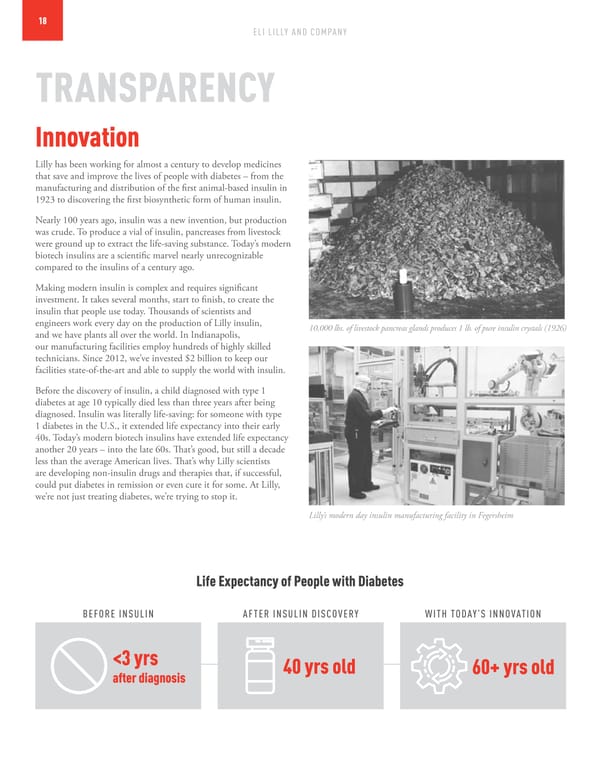18 ELI LILLY AND COMPANY TRANSPARENCY Innovation Lilly has been working for almost a century to develop medicines that save and improve the lives of people with diabetes – from the manufacturing and distribution of the first animal-based insulin in 1923 to discovering the first biosynthetic form of human insulin. Nearly 100 years ago, insulin was a new invention, but production was crude. To produce a vial of insulin, pancreases from livestock were ground up to extract the life-saving substance. Today’s modern biotech insulins are a scientific marvel nearly unrecognizable compared to the insulins of a century ago. Making modern insulin is complex and requires significant investment. It takes several months, start to finish, to create the insulin that people use today. Thousands of scientists and engineers work every day on the production of Lilly insulin, 10,000 lbs. of livestock pancreas glands produces 1 lb. of pure insulin crystals (1926) and we have plants all over the world. In Indianapolis, our manufacturing facilities employ hundreds of highly skilled technicians. Since 2012, we’ve invested $2 billion to keep our facilities state-of-the-art and able to supply the world with insulin. Before the discovery of insulin, a child diagnosed with type 1 diabetes at age 10 typically died less than three years after being diagnosed. Insulin was literally life-saving: for someone with type 1 diabetes in the U.S., it extended life expectancy into their early 40s. Today’s modern biotech insulins have extended life expectancy another 20 years – into the late 60s. That’s good, but still a decade less than the average American lives. That’s why Lilly scientists are developing non-insulin drugs and therapies that, if successful, could put diabetes in remission or even cure it for some. At Lilly, we’re not just treating diabetes, we’re trying to stop it. Lilly’s modern day insulin manufacturing facility in Fegersheim Life Expectancy of People with Diabetes BEFORE INSULIN AFTER INSULIN DISCOVERY WITH TODAY’S INNOVATION <3 yrs 40 yrs old 60+ yrs old after diagnosis
 Integrated Summary Report Page 18 Page 20
Integrated Summary Report Page 18 Page 20